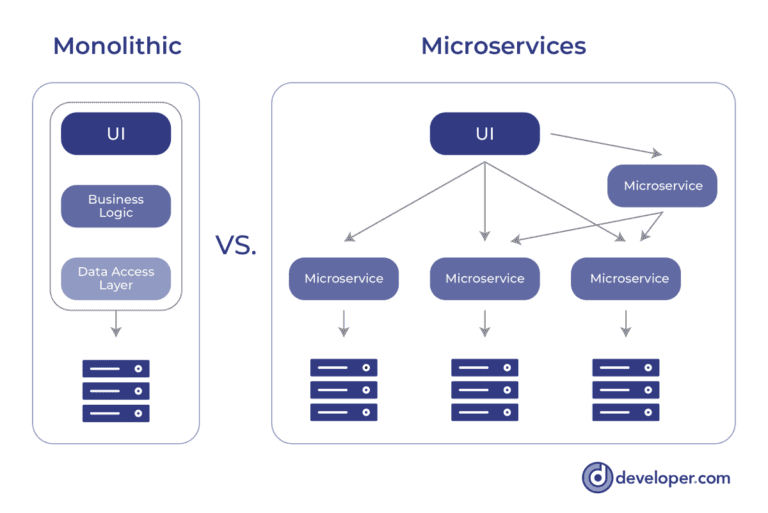Alation: How to develop a data governance framework

According to Alation, there are seven key steps to building a successful data
governance framework: Establish a mission and vision and create a set of
policies, standards and glossaries; Populate a data catalog with metadata that
shows data lineage and analyze that metadata to discover what data is most
popular and who are the top users of data; Recognize and assign data
stewards and empower those stewards to govern the organization's
data; Curate data assets by describing different data sets and applying
quality flags to the data sets so users can easily find the data they'll find
most useful; Apply policies and controls so that not all data can be
accessed by everyone within an organization and organizations can remain
compliant with applicable regulations; Drive community and collaboration to
promote trusted data use; and Monitor and measure the entire data
governance framework to determine policy conformance, create curation analysis,
measure the usage and creation of data assets, and determine the quality of
data. "If you're going to really do a process, you need to find out where the
gaps are and where you need to make course corrections," Myles Suer
Get to Know EF Core 6
EF Core 6.0 is a modern, cloud-native-friendly data access API that supports
multiple backends. Get up and running with a document-based Azure Cosmos DB
container using only a few lines of code, or use your LINQ query skills to
extract the data you need from relational databases like SQL Server, MySQL, and
PostgreSQL. EF Core is a cross-platform solution that runs on mobile devices,
works with data-binding in client WinForms and WPF apps “out of the box”, and
can even run inside your browser! Did you know it is possible to embed a SQLite
database in a web app and use Blazor WebAssembly to access it using EF Core?
Check out Steven Sanderson’s excellent video to see how this is possible.
Combined with the power of .NET 6, EF Core 6.0 delivers major performance
improvements and even scored 92% better on the industry standard Tech Empower
Fortunes benchmark compared to EF Core 5.0 running on .NET 5. The EF Core team
and global OSS community have built and published many resources to help you get
started.
Digital transformation: 4 questions CIOs should ask now

The heart of transformation is really the culture, and that requires commitment
from the entire leadership team. In 2016, CarMax began a significant
transformation effort. “We wanted to make sure that our organization – not just
technology, our entire organization – was ready for this change. And that
required a significant commitment not only from me, but also from the CEO. The
two other partners I worked closely with were the chief marketing officer and
the chief operations officer. So between the leadership team support, we were
able to demonstrate and articulate to the whole company that this is a change
for the entire company, not just a technology initiative,” says Mohammad. “We
put cross-functional teams together to show that we’re serious about this change
and we do have to transform ourselves to this digital way of working,” he says.
"It is difficult to change the fabric and core operating system of an
organization, so the leadership team needs to be there all the way. It is a
journey that never ends, so the support cannot subside. The support has to be
there all the time.
Why Machine Learning Engineers are Replacing Data Scientists
Not many people actually talk about ML engineering — at least compared to the
amount of people talking about data science — and yet I believe the demand for
ML engineers might surpass the one for data scientists. We can see the amount of
data scientists soaring all over the world, within companies of all sizes, while
most of these people aren’t actually doing data science at all, just analytics.
And many of those who are actually doing data science probably didn’t have to.
That means many organisations are hiring people to solve basically the same
types of problems, over and over again, in parallel. There is just a lot of
redundancy, and the quality of the people doing it varies substantially. At the
same time, we see companies like Google and Amazon, who have some of the best
data scientists in the world, working on “ready-to-use” ML systems on their
cloud platforms (GCP and AWS, respectively). This means you can plug your data
into their systems to benefit from all that knowledge, and all you need is
someone who knows how to make that connection and the necessary tuning--someone
like an ML engineer.
How to combat ransomware with visibility

The recovery process is often the last thing anyone thinks about. Disaster
recovery and business continuity (DRBC) is probably the toughest piece to
solve and, often, the most ignored. But if your organization is in healthcare
or part of critical infrastructure like utilities, there can be life-and-death
consequences to service interruptions. Ensuring business continuity might mean
the ability to keep working to save lives, which means that immediate
time-to-recovery is going to be very important. In the past, we used to have
to go and pull tapes from an archive at some off-site place to restore
systems—and that could take days. A few years ago, many businesses had backup
systems inside a hosted data center, allowing them to restore from another
server by replicating data across the pipe. That was a lot quicker than tape
backups, but it still had limitations. Today, cloud-hosted solutions make
things much easier because they take snapshots in time of your data. For this
reason, cloud storage makes DRBC much faster than legacy solutions that are
still stuck in a physical-servers-and-appliances frame of mind.
Lessons Learned from Self-Selection Reteaming at Redgate
At Redgate we believe the best way to make software products is by engaging
small teams empowered with clear purpose, freedom to act and a drive to learn.
We believe this because we’ve seen it; teams who have had laser-like focus on
an aim, decision-making authority and the space to get better at what they do,
were the most engaged and effective. If you have read Dan Pink’s seminal book
Drive: The Surprising Truth About What Motivates Us, you might recognise that
our beliefs echo what the author demonstrates are key to an engaged and
motivated workforce — autonomy, mastery and purpose. To remain true to our
beliefs, Redgate needs to ensure that the goals and expectations of our teams
are crystal clear, that we push authority to teams as much as we can, and we
encourage people to grow. We also recognise that different people have
different ambitions, preferences for work and views on what counts as personal
development. We have a large portfolio of products, written in a variety of
languages, structured in a variety of ways and that exist at various stages of
the product life cycle.
Global Tech Policy Briefing for November 2021: Banking, Broadband, & Big Tech

It’s not a secret that cryptocurrencies make central banks nervous:
Bitcoin and the like exist to flout regulation and control. So far, few
national governments have dared ban cryptocurrency outright; we’ve seen a
few years of cold war, with the American Securities and Exchange
Commission publicly sniping at Terraform Labs, for example, and many
governments mulling a ban on mixers. Turkey, whose lira is in freefall, is
moving toward an outright ban. Nigeria attempted a ban, but remains the
second-largest Bitcoin market in the world. In Russia, the Kremlin’s
stance is ambiguous, as rumors of a CryptoRuble make the rounds. But China
is the only major international power to successfully outlaw crypto
transactions by its citizens, full stop. Now, India may be joining them. A
new bill, the Cryptocurrency and Regulation of Official Digital Currency
Bill, 2021, “seeks to prohibit all private cryptocurrencies in India,
however, it allows for certain exceptions to promote the underlying
technology of cryptocurrency and its uses.”
The future of hyperautomation in 2022

Hyperautomation has come to prominence as a trend for 2021 thanks to the
maturity of digitalisation and of data management tools. The
aforementioned digital upskilling that many organisations have committed
to during the pandemic, combined with these tools, form the basis for
hyperautomation to take place in the right environment. But we’re only at
the start of a long journey. The digital recreation of your business,
warts and all, can prove a gruelling exercise in self-examination given
the speed at which systems are recreated, and resultant insights are
amalgamated. Companies will need to invest a lot of time and energy in
order to create long-term adoption of hyperautomation. Turning theory into
action is a big challenge to take on, and preparation is key. That
means that the value of hyperautomation will only start to materialise for
the pioneers that stay focused. Organisations need to stay on the ball and
avoid slipping back into old, stagnant processes driven by more
operational, tactical initiatives.
Sneaky New Magecart Malware Hides in Cron Jobs

Dubbed CronRAT, it hides in the Linux calendar subsystem as a task that
has a nonexistent date, such as Feb. 31. The malware remains undetected by
the security vendor and enables server-side Magecart data theft that
bypasses browser-based security solutions, according to researchers at
Dutch security firm Sansec. "This is very concerning, having been
discovered just after Black Friday and Cyber Monday, as well as before the
upcoming busy Christmas shopping period, where many unsuspecting shoppers
will likely move to online shopping due to the new variant of COVID-19,
which may result in further restrictions limiting in-person shopping,"
says Joseph Carson, chief security scientist and advisory CISO at
enterprise security firm ThycoticCentrify. So far, Sansec has not directly
tied this recently uncovered RAT to one particular Magecart group. And
while it’s not clear who exactly is behind this malware, the report notes
that its operators have created an unusual and sophisticated threat that
is packed with never-before-seen stealth techniques.
Digital Resilience Requires Changes In The Taxonomy Of Business IT Systems

Enterprises need to ensure they leverage Data as Assets and implement
Systems of Insights to support Data-Driven Decision making across the
entire Supply Chain and the broad spectrum of business processes and
functions. Today enterprises are under immense pressure from Regulatory
Authorities, Cyberattacks, and the pivot in customer buying patterns to
prefer Trusted, Responsible and Sustainable Products. This effectively
means enterprises need to look at Security and Compliance by design –
which is best implemented by transitioning to Systems of Insights and
Compliance. Skills and Talent are the new currency for the business. It is
critical to capture the knowledge and experiences across the company both
from a perspective of improving productivity and faster time to market.
Many enterprises implemented Learning Management Systems (LMS) in some
shape or form. Still, they were seen as a secondary system for Talent
Retention and tracking employee training.
Quote for the day:
"The final test of a leader is
that he leaves behind him in other men, the conviction and the will to
carry on." -- Walter Lippmann















/filters:no_upscale()/articles/introducing-kivakit/en/resources/1mini-frameworks-1637785248958.png)



















